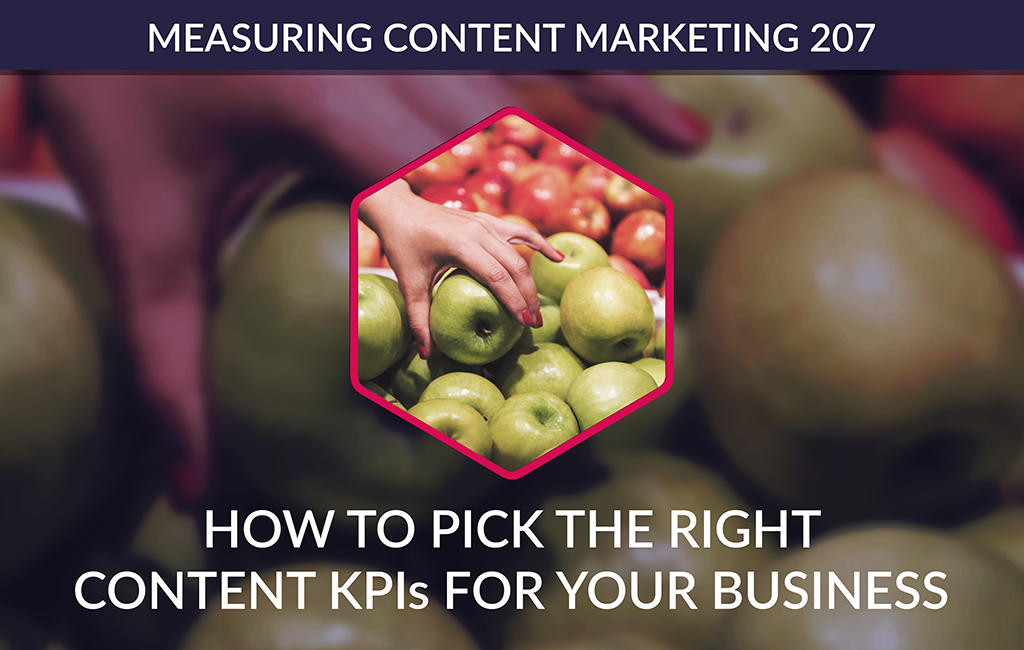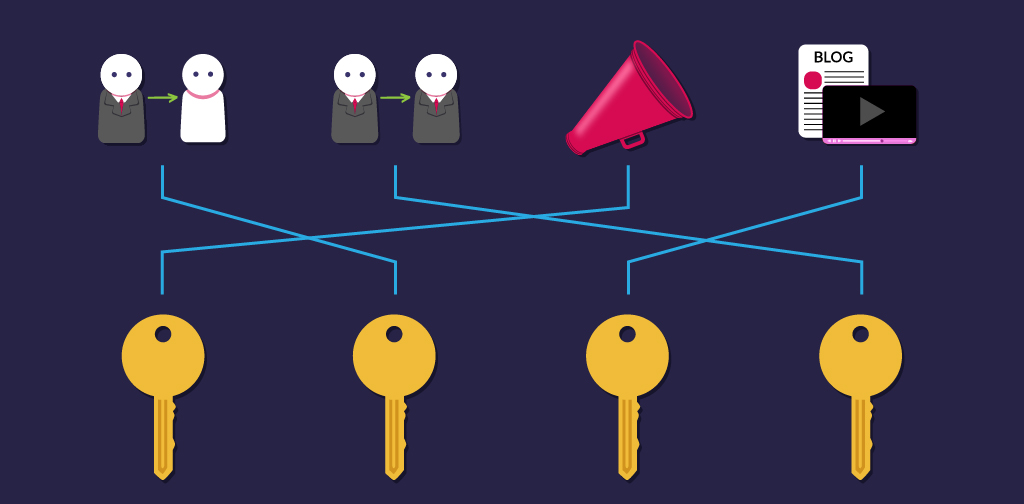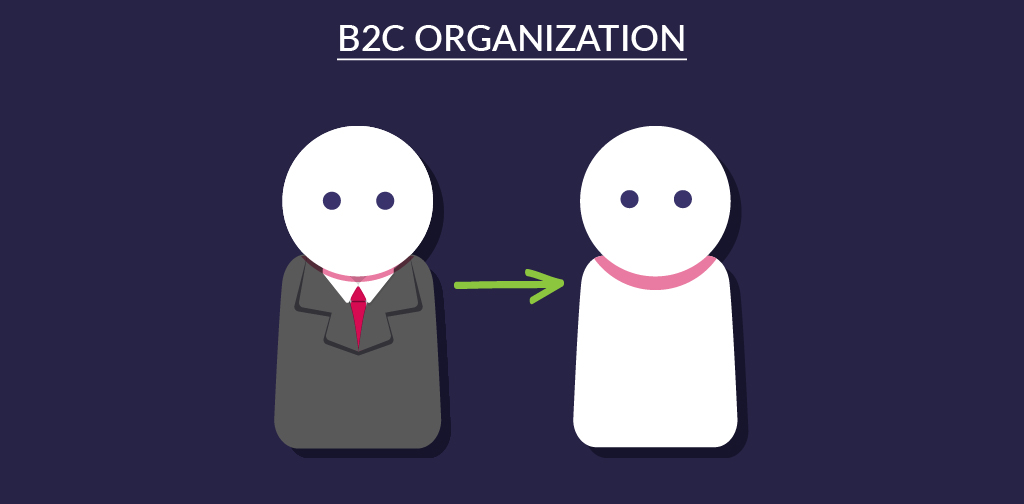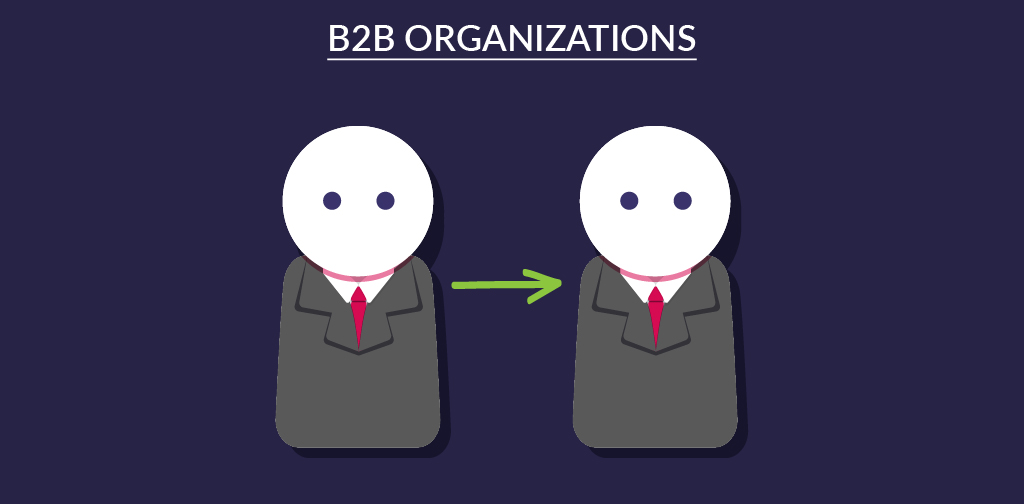
Table of content:
- 1. Why divide content KPIs by the type of business?
- 2. Here’s what you need to know about 4 categories and why each type of organization requires tracking different content KPIs.
- 3. 1. B2C organization
- 4. Primary KPIs
- 5. Secondary KPIs
- 6. 2. B2B Organizations
- 7. Primary KPIs
- 8. Secondary KPIs
- 9. 3. Marketing agencies
- 10. Primary KPIs
- 11. Secondary KPIs
- 12. 4. Content publishers
- 13. Primary KPIs
- 14. Secondary KPIs
- 15. Key takeaway
The article contains:
Welcome to the final part of our guide to measuring the efficiency of your content marketing strategy.
To help you navigate our series of articles, here’s a recap of what we’ve covered so far:
- Part 1 – What content marketing KPIs are and why you need to start measuring them,
- Part 2 – Essential things you need to consider when picking content marketing KPIs,
- Part 3 – Key SEO metrics and KPIs,
- Part 4 – 10 critical business and conversion KPIs,
- Part 5 – Social media engagement metrics you need to measure,
- Part 6 – User engagement KPIs all content marketers should be exploring.
Now that we gave you a detailed overview of 4 different KPI groups that come in handy for all content marketers (SEO, business and conversion, social engagement, user engagement), it’s time to develop a strategy for choosing the right KPIs.
The choice KPIs for your content marketing strategy depends on your business model. In this part of our guide, we take a closer look at 4 different types of companies:
- Business-to-consumer (B2C)
- Business-to-business (B2B) company,
- Marketing agency,
- Content publisher.
Why divide content KPIs by the type of business?
Consider this:
While a B2B company may only be interested in tracking metrics that show the profits of their content marketing campaign, a manager at a marketing agency will want to see more details about the traffic generated by content – for example, where it comes from.
Depending on their priorities and level of knowledge, organizations take advantage of KPIs that reach different levels of depth.
Here’s what you need to know about 4 categories and why each type of organization requires tracking different content KPIs.
1. B2C organization
For B2C companies, the primary goal is most of the time selling more products or services to customers. That’s why the most critical metrics here are sales and revenue because they show how much money the business is actually making.
Primary KPIs
That’s why the business and conversion metrics are so important here. Social engagement KPIs also play a part, especially for tracking purchases generated from social channels.
Secondary KPIs
Business and conversion metrics:
- Conversion rate
- Cost per acquisition
- Customer lifetime value
- ROAS
- Order value
- Consumer loyalty and retention
SEO metrics:
- Organic conversion rate.
User engagement metrics:
- Conversion rate
Social engagement metrics:
- Social conversion
The secondary KPIs may not be directly linked to the profits made by the company. However, when a business sees a major improvement in these metrics, it means that customers are close to making a purchase. That’s why a boost in the secondary KPIs often entails an improvement in the primary KPIs.
Expert tip: These metrics may differ depending on the size of the organization. Large organizations usually have multiple stakeholders and executives may only look at the main KPIs. However, smaller B2C organizations where employees wear multiple hats are interested in the secondary KPIs as well – that’s how they measure the effectiveness of their content marketing efforts.
2. B2B Organizations
B2B companies operate in a different way than organizations that sell to consumers. Their business cycle is usually much longer and a single sale may even take months to close. There will be more meetings between two companies that are about to collaborate, including product demonstrations, signing on non-disclosure agreements, and negotiating on terms.
For B2B companies, primary goals are measured through lead generation. We can call leads conversions, even if they’re not necessarily selling a product or service in the conversion. Conversion is still a mark of interest and valuable contact information of a target client.
Primary KPIs
Business and conversion metrics:
- Revenue
- Sales
- Conversion rate
- Leads generated
SEO metrics:
- Organic conversion rate
User engagement metrics:
- Conversion rate
Social engagement metrics:
- Purchases generated from social
- Leads generated from social
- Social conversions
Secondary KPIs
Business and conversion metrics:
- Customer loyalty and retention
- Media mentions
- Branded searches
- Cost per acquisition
- Order value
- Customer lifetime value
- ROAS
Remember that not all B2B companies are large. The giants among them usually have a considerable amount of marketing project budget dedicated to advertising, social media, and other digital marketing channels. That’s why B2B companies use all of these metrics – they are simply interested in measuring how effective their campaigns are.
3. Marketing agencies
Marketing agencies take advantage of content marketing in many different ways, starting from long-form content like white papers to blog posts and social media. All these efforts may contribute to a sale, but marketing agencies are interested in learning how effective their individual campaigns are. They often use content marketing to introduce their products or services to a brand-new audience to increase brand awareness.
Primary KPIs
Business and conversion metrics:
- Revenue
- Sales
- Leads generated
- Cost per acquisition
- Conversion rate
- ROAS
- Customer lifetime value
- Total traffic
- Media mentions.
SEO metrics:
- Mobile search traffic
- Organic search traffic
- Organic conversion rate
- Links
Social engagement metrics:
- Social conversions
- Social referral traffic
- Leads generated social
- Most popular content
- Shares or retweets
User engagement metrics:
- Conversion rate
Secondary KPIs
Business and conversion metrics:
- Customer loyalty and retention
- Branded searches
- Reviews
- Order value
Social engagement metrics:
- Reviews
- Net promoter score
- Email subscribers
User engagement metrics:
- Page views
Note that marketing agencies share many of these KPIs with B2B and B2C companies. However, many of the secondary KPIs are entirely different. Remember that a digital marketing agency may create content that doesn’t need to lead to a conversion. Sometimes it’s all about boosting brand awareness. Marketing agencies want their content to be shared widely on social media.
Press releases or newsletters don’t need to bring a high number of conversions; it’s the awareness building that helps to get higher in SERP rankings and makes digital marketing agencies stand out from the crowd. Naturally, marketing agencies are always interested in measuring the popularity of their content marketing campaigns.
4. Content publishers
Who exactly are publishers? They’re blog owners, online magazines and news companies. Remember that their primary source of profits is advertising income. And to sell more advertisements, they need to drive more traffic to their websites.
Primary KPIs
Business and conversion metrics:
- Total traffic
- SEO organic search traffic
- Mobile search traffic
User engagement metrics:
- Page views
- Unique visitors
Social engagement metrics:
- Reach
- Engagement rate
- Most popular content
- Social referral traffic
- Likes, reactions, and favorites
- Video engagement and completion
- Impressions
- Followers
Secondary KPIs
Social engagement metrics:
- Comments and replies
- Shares and retweets
- Mentions
- Profile views
User engagement metrics:
- Pages per session
- Time on page
- Page or interaction depth
SEO metrics:
- Ranking position
- Organic links
- Organic click-through rate
- Mobile rankings
- Organic impressions
- Accelerated mobile pages
- Duplicate titles and descriptions
- Pages indexed
Publishers also offer paid subscriptions, but their revenue is directly related to the number of visitors they manage to attract. That’s why the most important KPIs for them are the ones that show how many visitors are engaging with their content. These numbers are extremely important in negotiations with prospective advertisers. That’s why traffic and social shares are the most critical metrics here.
Need help in distributing content? Check out our content marketing platform, we list thousands domains ready to publish your content.
Key takeaway
It doesn’t matter what kind of organization you’re working for: if you want to succeed, you need to invest in content and then measure how it performs for your target audience.
The main KPIs we reviewed for each type of organization are the most common ones. But that doesn’t mean you can’t take a more in-depth look into other KPIs. Ultimately, it depends on what you’re looking to gain from content marketing, what your primary goals are, and how much you know about the potential benefits of content marketing for your business.
All the KPIs mentioned above – and throughout our guide – form the foundation on which you can build your content marketing analytics.
This chapter concludes our guide to measuring content marketing KPIs. Do you have any questions about measuring these metrics? Don’t hesitate to share your thoughts in the comments; we’re happy to help marketers build more efficient campaigns thanks to advanced analytics.









